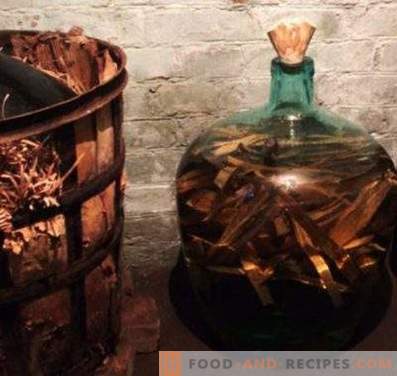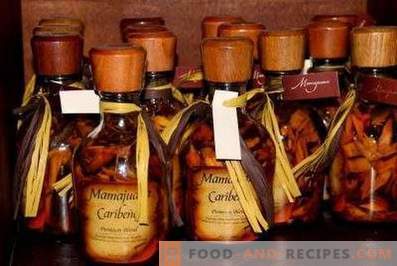
Sooner or later bottles appear in every house or apartment with a noble drink called whiskey. The history of this alcohol begins somewhere in the depths of the Middle Ages, when the art of distillation was brought to the lands of Ireland and Scotland by Christian missionaries. Thermophilous grapes were replaced by enterprising residents with more common and common barley, and as a result a drink was born that was originally called “living water”, or uisge beatha. The English conquerors very quickly appreciated it and renamed it to your taste. This is how the modern name “whiskey” appeared.
Our contemporaries also pay tribute to this aromatic and diverse in their organoleptic properties of alcohol, made from various types of grain, from wheat to buckwheat. Now there are both versions of the drink, available to everyone, and rare items for connoisseurs and collectors. Regardless of whether you bought whiskey in the duty-free shop of any airport, returning from vacation, or purchased a collection bottle of man-made scotch in a store at a Scottish distillery, the same problem arises before you: how to preserve precious moisture. Here are some tips to help you properly store the whiskey, from time to time enjoying his magnificent bouquet.
- If you have at your disposal a bottle of a quality rare drink that you want to drink on a particularly solemn occasion, and this reason is not yet known when it will be, then the most important thing is to resist the temptation to try whiskey right away. The fact is that alcohol bottled in the factory can be stored for as long as desired without losing its rare qualities only if it is completely sealed. Moreover, collectible drinks over time do not age, like wine, but only rise in price.
- The temperature regime for whiskey should be provided in the range from +5 to +20 ° C, while a higher temperature can accelerate the process of cork drying out. Low temperatures also adversely affect the quality of the drink, contributing to the formation of sludge or flakes. This phenomenon is not dangerous for expensive varieties, as it indicates the careful handling of the drink during its manufacture and, consequently, its deep taste and unique aroma. The sediment in such specimens is easy to eliminate by warming the bottle to room temperature.
- Scotch does not like bright solar or electric light, from which the structure of the drink deteriorates and the color loses its honey yellowness. If you do not have a special closed place for storing alcohol, then simply store the bottle in its original packaging. In addition, too hot a sun may cause the cork to dry out, which will be fatal to the drink in its consequences. To avoid the destruction of the cork, it is better to keep old bottles on its side, so that the liquid comes in contact with the cork, constantly wetting it.
- The main problem when trying to preserve the quality of already open whiskey is the undesirable interaction of the drink with oxygen. The oxidation process is detrimental to the taste of alcohol, and the more oxygen gets access to the drink, the more intense this process. To keep the bottles already open, collectors experiment with the temperature and humidity in the store, keep the bottles upside down, but still the right decision would be to use whiskey for a year. During this period, the drink will practically not lose neither its unusual complex taste, nor peculiar aroma.























